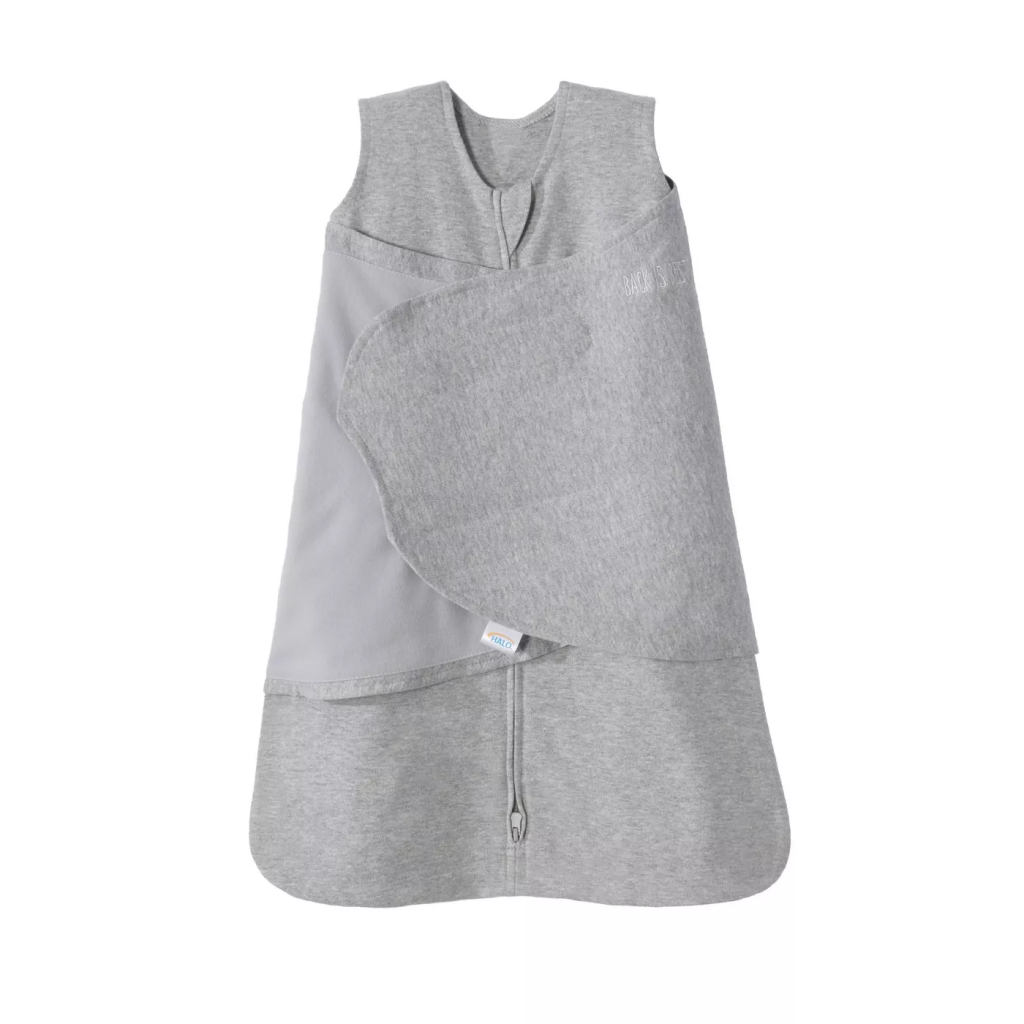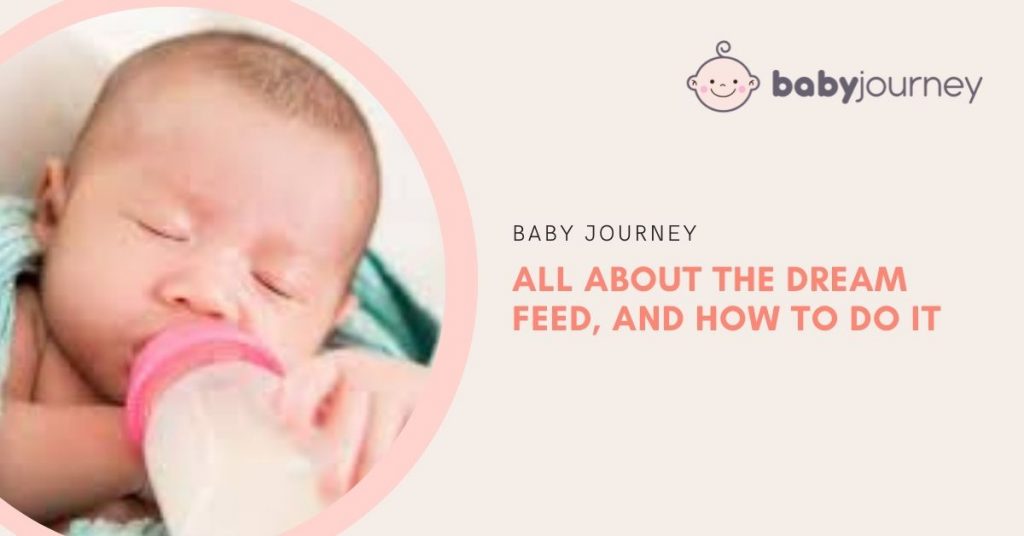Have you ever received the advice that you should dream feed your child? If so, you may have wondered, what is a dream feed? It sounds pleasant enough, and if you have a child that won’t go to bed or go back to sleep you are probably willing to try anything!
A dream feed is actually a very useful strategy for many parents with babies that are a few weeks old to months old and are still figuring out their sleep patterns. If you are interested in dream feeding baby then read on!
What Is a Dream Feed?
Dream feeding is a method of feeding that is chosen by the parents and not the baby. Still, it can help reduce night wakings by filling up your little one’s stomach one last time before their longest stretch of sleep.
To dream feed your child, you partially wake up your child to feed them two to three hours after they have gone to bed. You don’t fully awaken your child, but simply rouse them enough to eat. Consider it a midnight snack for your baby!

Baby feeding in this way has a handful of benefits for the parents and the child.
- Dream nursing may help your child stay fuller longer, reducing middle of the night feeding and waking.
- Dream feeding might help your baby wake up later in the morning at a more “reasonable time”.
- If you are struggling with newborn feeding during the day, keeping your little one mostly asleep while eating may give them a full feed while allowing you to work on your latch or positions.
Ultimately the goal of dream feedings is to provide everyone with better sleep! As a bonus, it could turn out to be one of your child’s best feeds of the day.
When To Start Dream Feeding?
When should you start sleep feeding baby? First, know that newborn night feeding is very normal. Though this isn’t the same thing as a dream feed, you can still dream feed a newborn; it just might not have the same results.
Newborns have extremely small stomachs and need to eat every 1-2 hours. When your little one progresses to sleeping longer stretches at night without needing to eat, around 2-3 months, you can try dream feeding. Hopefully, by the time your child is closer to six months, you will no longer need dream feeding.
Signs that your little one (and you) can handle dream feeding include:
- At least 2-3 months of age
- Sleeping longer stretches at night without regularly waking to feed
- You have started sleep training and dream feeding works with your plan
- You are trying to wean your child off night feedings (as long as they’re an appropriate age)
Your Child’s Sleep Schedule
Before you add a dream feed, consider how it will affect your child’s sleep schedule and feed times.
Without a dream feed, you might feed your child at 6:30 pm and they may go to bed at 7 pm while you go to bed around 10 pm. By about midnight they could be back up and ready to eat as their longest sleep stretch without eating (typically six hours) started at 6:30 pm. Unfortunately, at that point, you may have only been asleep for two hours!
With a dream feed around 10 pm, before you go to bed, your child could sleep until 3 or 4 am. Their longest sleep stretch will begin at 10 pm now, letting you both sleep almost the whole night through.
Dream feeds help to fill your child up to sleep longer and make the feeding at a convenient time for you so you can have more uninterrupted sleep. Dream feeding usually works well with sleep training so you may want to start both at the same time.
How Do I Dream Feed?
Ready to become a dreamfeeder but still skeptical if waking babies to feed is really that easy? It sounds counterintuitive and a little scary, but waking your child to dream feed isn’t difficult.
- First, right before you go to bed gently lift your child from their crib or bassinet. Your baby should rouse slightly but not fully wake up.
- Place your breast or bottle at their lips to begin feeding. If they are not awake “enough” try gently stroking their lips or cheek to get them to open their mouth wide.
- Feed your little one. When they’re finished you can burp them if they still need to be burped or return them to their bed.
Tips for Getting The Hang of It
Here are a few more tips that may help you get the hang of this dreamy night time feeding:
Time your feeding intervals
It can truly help to write down your and your baby’s sleep schedule to figure out the best time to dream feed. You want to feed your child just before you go to bed and before the time they would normally wake to eat.
Dream feed your baby in an active sleep period
Active sleep or REM is when you may notice eyelids fluttering or arms and legs making small movements. Feeding your child when they’re slightly stirring may allow them to latch quicker and get a fuller feed.
If your child is super sleepy, stroking their lips or cheek may not help
Changing their diaper commonly works to wake them up just enough. Doing so with the help of a non-toxic changing pad or changing table can allow the sleepy baby to continue resting its eyes. Do keep in mind though, that the baby shouldn’t sleep in these changing stations. They work well as temporary resting spots but are unsafe as long-period sleeping.

Getting Baby Back To Sleep After Dream Feeding
If you do dream feeding properly, getting your baby back to sleep should be rather simple. Remember, when you dream feed you don’t want to fully wake your child.
After dream feeding, following your typical sleep training method is recommended. If you usually set your child down sleepy but awake, then do so. Alternatively, if you swaddle your child or rock and swing them you may want to spend some time doing this before you put them back in bed.

Many parents have a routine that consists of swaddling, playing some noise, rocking or swinging, and giving a pacifier if your child uses it. You don’t have to go through your entire bedtime routine, but you may want to complete a mini-version of your routine so that your child understands it is time again to sleep.
Does It Really Work? Dream Feeding Risks
Dream feeding doesn’t work for every family, and it is your choice if you want to give it a try.
If you do decide to dream feed make sure that your child is at least partially awake. You don’t want your little one to be in deep sleep or laying down flat as these can be unsafe feeding conditions. You also don’t want to force a feeding session on your child.
If you fully wake your child, you may encounter difficulty getting them to go back to sleep. Because you interrupted their normal routine you could be in for more night wakings rather than less.
Also, if your child becomes accustomed to dream feeding they may start to naturally wake around the same time each night due to hunger. This could cause problems when it is time to drop the dream feed for good.
Other risks associated with dream feeding include:
- Gas – Young infants have immature digestive systems that can lead to gas and reflux after eating. Feeding your child while they’re not fully awake could lead to gas, especially if you are unable to effectively burp them afterwards.
- Choking – If your child is in deep, deep sleep or you feed them lying flat instead of propped there is a choking risk. Dream feed breastfeeding and bottle feeding should always be done in a propped position.
- Overfeeding – It is hard to tell if your baby is truly hungry if they’re asleep. Dream feeding them may mean they eat even when they’re not hungry. This could result in more wet or dirty diapers, spitting up, or just an unnecessary extra feed.
- Ear infections – Bottle feeding a baby who is lying flat could cause a middle ear infection. Feeding your child in a propped position should cut down on this risk.
Ultimately, the choice of whether or not to dream feed is up to you.
Common FAQs About Dream Feeding
Here are answers to a few common dream feeding questions.
What time is considered night for dream feeding?
Now that you know how to dream feed you may wonder when to dream feed. What time of night you decide to dream feed depends on you and your child’s schedule.
You typically want to dream feed them around the time you are going to bed and when your little one has been asleep for a few hours. For most families, this happens to be around ten or eleven at night.
Should I wake my newborn to feed?
If you have a newborn who is still trying to gain weight, experts recommend that you wake them every three to four hours to eat during the first few weeks of life. If your child is gaining weight well you can let them sleep.
Unless you decide to dream feed them at which point you should rouse them but not fully wake them up.
If your baby won’t wake up to eat you can try changing their diaper or tickling their feet. Similarly, if you find that your baby falls asleep while breastfeeding but is still hungry you may want to try these methods to wake them.
When to stop waking baby to feed?
If your bottle-fed or breastfed baby is sleeping through the night, you probably don’t need to wake them to eat. This is true as long as your child is gaining weight and developing properly.
When can you stop burping a baby after a dream feed?
Burping your child after eating can help prevent painful gas bubbles that could wake them up. However, not all parents burp their children.
It is recommended that you make an effort to burp your child after dream feeding. Though if your baby won’t burp after a few minutes it is probably safe to lay them down.
It is a little more problematic if a newborn won’t burp because they’re the most susceptible to gas. You can try changing your position and hopefully, this will get a burp or two out!
How to start the second dream feed?
If you need a second dream feed it probably isn’t a dream feed. A dream feed usually happens during your child’s longest sleep stretch which is the first stretch of sleep. Many young babies will then wake after this stretch, typically around 3 am, to eat because they are hungry.
By this point, you will probably be asleep too. Therefore, you won’t be feeding them before you go to bed as you do with a dream feed, it will be a typical night waking.
Dream Feeding Can Be a Delight
During the first few months of your child’s life, before they are sleeping through the night, dream feeding can let you and your baby get a longer uninterrupted period of sleep.
It can also help your child get more calories and nutrition by taking a fuller feed. Dream feeds aren’t for everyone but you can certainly consult with your doctor and give them a try.
Don’t forget to leave your questions in the comments and hopefully, you found this article useful!
—




